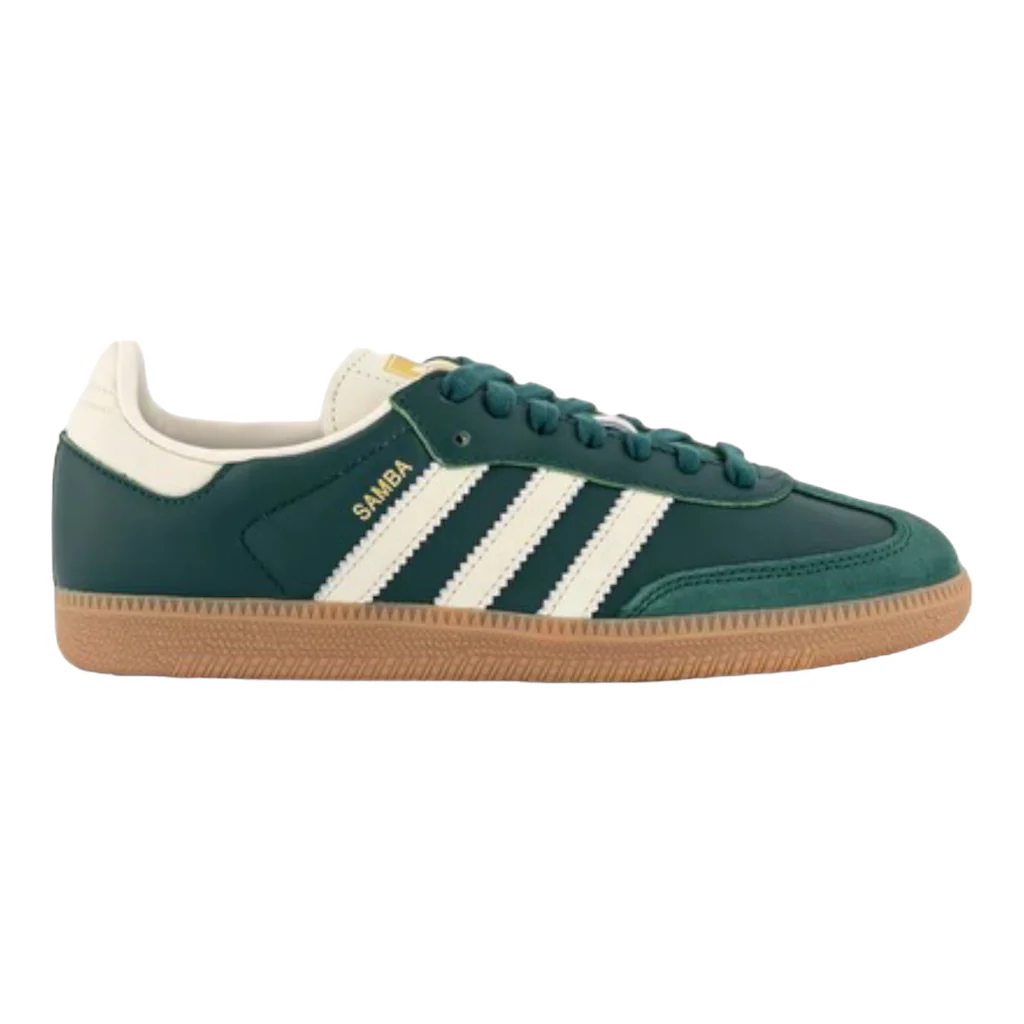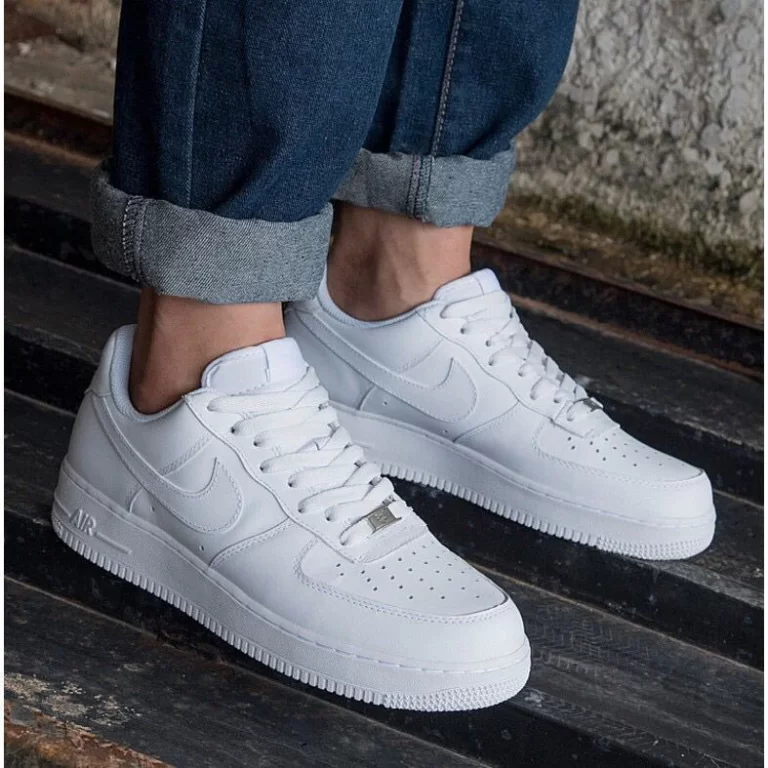
Samba Sneakers: A Timeless Icon in the World of Footwear
The Birth of a Legend
Samba sneakers have become a true icon in the world of footwear. These classic shoes first hit the market in 1950, designed to help soccer players train on icy, hard ground. Adidas, the renowned German sportswear company, created the Samba with a unique gum sole that provided excellent traction on frozen surfaces. Initially, the shoes featured a kangaroo leather upper, which offered superior comfort and durability.
The Samba’s distinctive T-toe overlay quickly became its signature feature, setting it apart from other athletic shoes of the era. Over time, the Samba evolved from a purely functional soccer training shoe into a versatile, stylish option for everyday wear. Its simple yet elegant design appealed to a wide range of consumers, transcending its original sports-specific purpose. As a result, the Samba has remained in continuous production for over seven decades, making it one of Adidas’ longest-running and most successful shoe models.

From the Field to the Streets
The transition of Samba sneakers from sports equipment to streetwear staple was a gradual process. In the 1960s and 1970s, the shoes gained popularity among soccer fans who wore them to matches and casual outings. The Samba’s comfortable fit and durable construction made it an ideal choice for everyday wear. Additionally, its sleek profile and understated design allowed it to pair well with various styles of clothing.
As casual fashion became more prevalent in the 1980s, the Samba found a new audience among young urbanites and skateboarders. The shoe’s grippy gum sole proved excellent for skateboarding, while its classic look fit perfectly with the emerging street style aesthetic. Furthermore, the Samba’s affordability compared to other premium sneakers made it accessible to a broader range of consumers. This combination of style, functionality, and value propelled the Samba beyond its soccer roots and into the mainstream fashion world.
A Cultural Phenomenon
Samba sneakers have left an indelible mark on popular culture. Throughout the decades, these iconic shoes have been embraced by various subcultures and movements. In the 1980s, the Samba became closely associated with the British casual subculture, which originated among football fans. This group favored designer sportswear and helped elevate the Samba’s status as a fashion item. Later, in the 1990s, the shoes found a new following within the Britpop music scene.
Bands like Oasis and Blur often sported Sambas, further cementing their cool factor. The sneakers also gained traction in the hip-hop community, with numerous artists featuring them in music videos and performances. Beyond music, Sambas have made appearances in films and television shows, often used to convey a character’s laid-back or alternative style. This widespread cultural adoption has helped the Samba maintain its relevance and appeal across generations. As a result, these sneakers have become more than just footwear; they represent a lifestyle and a connection to various cultural movements.

Timeless Design and Versatility
The enduring popularity of Samba sneakers can be attributed to their timeless design and remarkable versatility. The shoe’s clean lines and simple color schemes have allowed it to remain fashionable for decades, adapting to changing trends without losing its core identity. The classic black leather upper with white stripes and gum sole is instantly recognizable, but the Samba has also been released in numerous color variations over the years. This adaptability allows wearers to express their personal style while still sporting an iconic shoe.
Moreover, the Samba’s versatility extends to its functionality. While no longer primarily used for soccer training, the shoe performs well in various settings. Its comfortable fit and durable construction make it suitable for casual everyday wear, light athletic activities, and even certain workplaces. The Samba effortlessly transitions from day to night, pairing equally well with jeans and a t-shirt or dressier casual attire. This versatility has contributed significantly to the Samba’s longevity in the highly competitive sneaker market.
Sustainable Production and Ethical Considerations
In recent years, Adidas has made efforts to improve the sustainability and ethical production of Samba sneakers. The company has introduced versions of the Samba made with recycled materials, aiming to reduce its environmental impact. These eco-friendly models use recycled polyester in the upper and recycled rubber in the outsole. Additionally, Adidas has phased out the use of kangaroo leather in Sambas, responding to concerns about animal welfare. The brand now primarily uses synthetic materials or cow leather in the production of these sneakers.
Furthermore, Adidas has implemented more stringent labor practices in its supply chain, working to ensure fair wages and safe working conditions for those involved in manufacturing Sambas and other products. These initiatives reflect a growing consumer demand for sustainable and ethically produced footwear. By adapting its production methods, Adidas has helped the Samba remain relevant in an increasingly environmentally conscious market.

Collaborations and Limited Editions
The Samba’s iconic status has made it a popular choice for collaborations and limited edition releases. Over the years, Adidas has partnered with various designers, artists, and brands to create unique versions of the classic sneaker. These collaborations often feature innovative materials, bold color schemes, or subtle design tweaks that set them apart from standard Sambas. Limited edition releases have included partnerships with high-end fashion houses, streetwear brands, and even environmental organizations.
These special editions not only generate excitement among sneaker enthusiasts but also introduce the Samba to new audiences. Collectors eagerly anticipate these releases, with some rare models becoming highly sought-after items in the resale market. The collaborations and limited editions have played a crucial role in keeping the Samba fresh and exciting, even after decades on the market. They demonstrate the shoe’s ability to evolve and adapt while maintaining its core identity.
Influence on Sneaker Culture
Samba sneakers have significantly influenced broader sneaker culture. As one of the earliest athletic shoes to cross over into everyday fashion, the Samba helped pave the way for the current sneaker-obsessed culture. Its success demonstrated that sports shoes could be stylish and versatile, inspiring other brands to focus on the lifestyle aspect of their products. The Samba’s longevity has also set a standard for timeless sneaker design, influencing how other brands approach creating shoes with lasting appeal.
Additionally, the shoe’s role in various subcultures has contributed to the idea of sneakers as a form of self-expression and identity. The Samba’s impact can be seen in the design of many contemporary sneakers, which often draw inspiration from its classic silhouette and simple aesthetics. As sneaker culture has grown into a global phenomenon, the Samba remains a respected elder statesman, admired by both casual wearers and dedicated sneakerheads.
Global Popularity and Regional Variations
The popularity of Samba sneakers extends far beyond their German origins. These iconic shoes have gained a devoted following in numerous countries around the world. In the United Kingdom, Sambas have been a staple of casual fashion for decades, closely associated with football culture and indie music scenes. Across Europe, the shoes are appreciated for their blend of sporty and stylish elements.
In North America, Sambas have found favor among skateboarders, college students, and fashion-conscious urbanites. The shoes have also gained significant popularity in South America, particularly in countries with strong soccer traditions. Interestingly, Adidas has released regional variations of the Samba to cater to different markets. These variations might include slight design tweaks, unique colorways, or special editions that resonate with local cultures. This global appeal, combined with thoughtful regional adaptations, has helped the Samba maintain its status as a worldwide fashion icon.

The Future of Samba Sneakers
As Samba sneakers enter their eighth decade of production, their future looks bright. Adidas continues to innovate with new materials and production techniques, ensuring that Sambas remain relevant in an ever-changing market. The brand has introduced performance upgrades to some Samba models, catering to those who still use the shoes for sports. At the same time, Adidas maintains the classic versions that have stood the test of time.
Looking ahead, it’s likely that Sambas will continue to evolve while staying true to their iconic design. We can expect to see more sustainable versions, innovative collaborations, and perhaps even tech-integrated models. The retro appeal of Sambas is also likely to persist, as vintage and throwback styles remain popular in fashion. With its rich history and adaptable design, the Samba is well-positioned to remain a favorite among sneaker enthusiasts for years to come.
Caring for Your Sambas
Proper care can significantly extend the life of Samba sneakers, allowing wearers to enjoy their favorite shoes for years. Regular cleaning is essential, especially for the suede and leather versions. A soft brush can be used to remove dirt and dust, while a damp cloth can tackle more stubborn stains. For deeper cleaning, specialized sneaker cleaning products are available. It’s important to stuff the shoes with paper when not in use to help maintain their shape.
Rotating between multiple pairs of shoes can also help extend their lifespan by allowing each pair to air out between wears. For the gum sole, occasional scrubbing with a soft brush can help maintain its grip. When storing Sambas, keep them in a cool, dry place away from direct sunlight to prevent material degradation. With proper care, a pair of Sambas can remain in good condition for many years, making them a worthwhile investment for any sneaker enthusiast.

